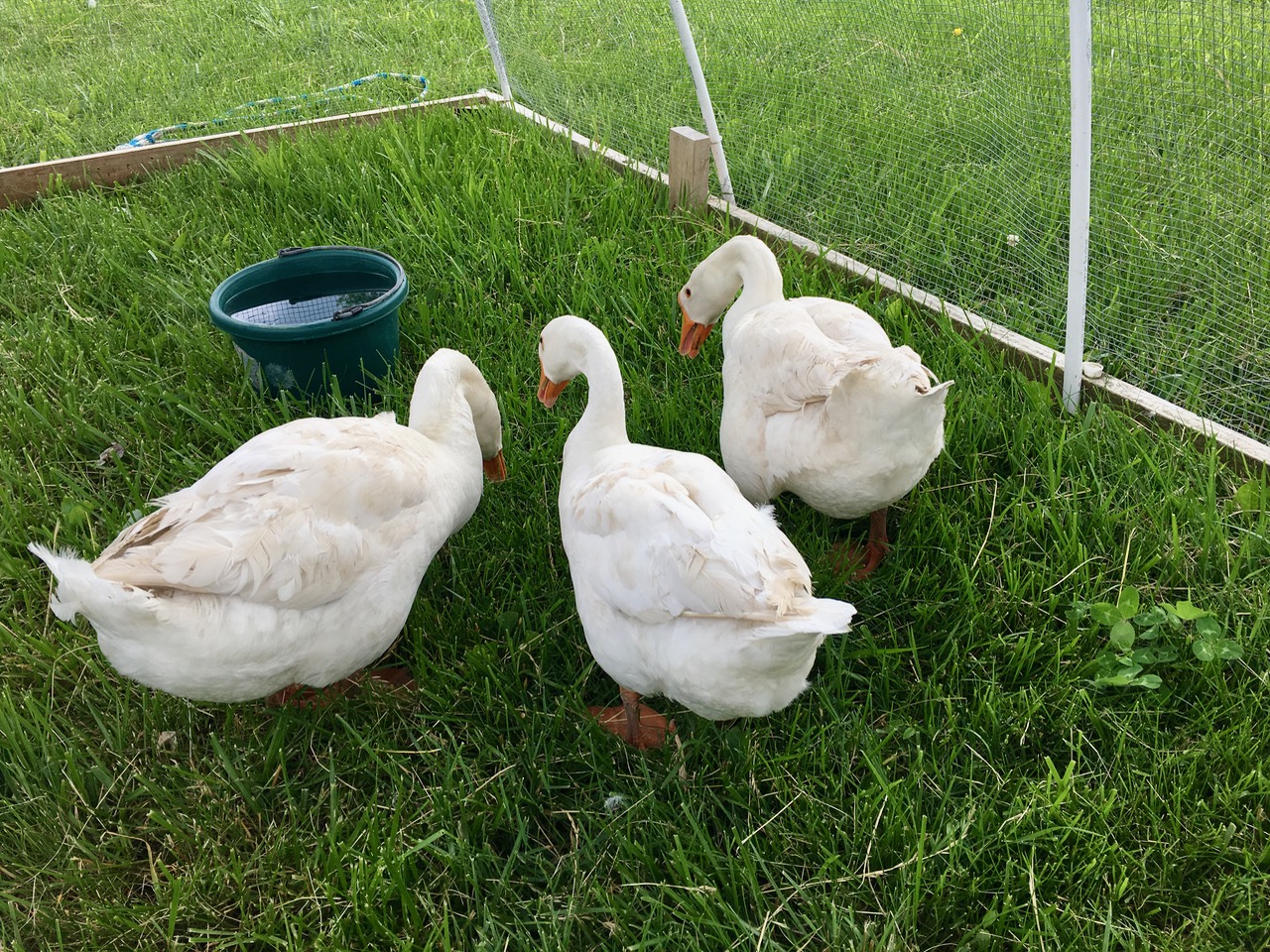
We’ve been considering adding geese to the farm for a while, and have been researching different breeds to find the one that we think will be the best fit. We’re pleased to share that yesterday, we brought three young Chinese geese home.
Why Chinese geese? They’re known to be good guardian animals because they’ll create a racket if they see something that doesn’t belong (this could be a downside if you live close to neighbors), they’re some of the best layers, they can obtain much of their nutrition from eating weeds and pasture greens, and they’re lovely creatures. You know how we like pasturing our animals!
The trio (2 ganders and a goose) are in a tractor and will be quarantined for at least 2 weeks. Quarantining new animals is a best practice and failing to do it may result in communicable diseases like respiratory illnesses infecting the entire flock. There are even some poultry diseases that are serious and difficult enough to eradicate that keepers have elected to destroy their entire flocks. Needless to say, that’s bad news for the animals and for the farmer.
Inside their tractor, the geese have a small wading pool for bathing, a full pail of water for drinking, and a bowl of fermented feed. When we first transferred them from the wire kennel they were transported in to the tractor, they cautiously inspected their new environment for a few minutes, then started grabbing mouthfuls of the lush green grass around them. They graze like ruminants, rather than other waterfowl – our Muscovy will snap the tips of grass and clover off, but just the most tender bits – the geese just chow down on whatever they grab.
Sometimes, it can take time to transition animals that are used to dry feed to fermented feed, but the geese took right to it. That makes us happy because we know that they’ll start developing good gut flora and strong immune systems. As with our other poultry, they’ll also get probiotics in the form of raw vinegar in their drinking water. It may sound strange, but when you see a rooster happily sipping the vinegar-laced water, it’s clear that the animals really enjoy it.
The plan is to integrate the geese into the main poultry/waterfowl group – with separate night quarters – once their quarantine has ended. Fortunately, the geese aren’t much bigger than a Muscovy drake, so we’re hoping skirmishes will be minimal (or better yet, nonexistent). Given time, we think they’ll fit right in and become a valuable part of the group. And, someday, we’ll find a big goose egg!
